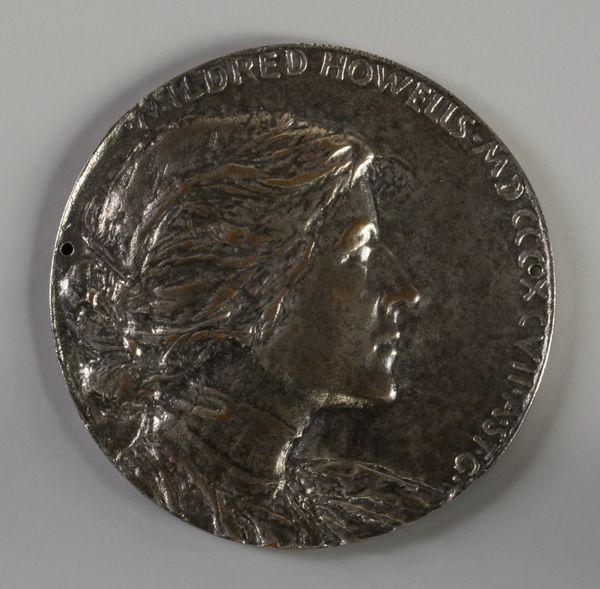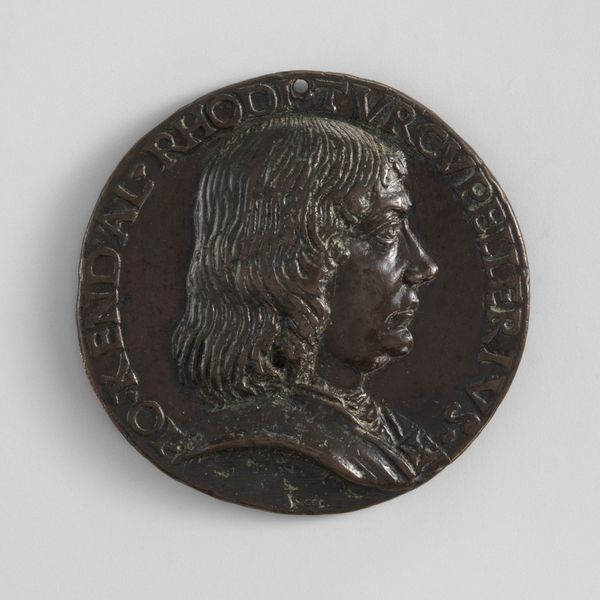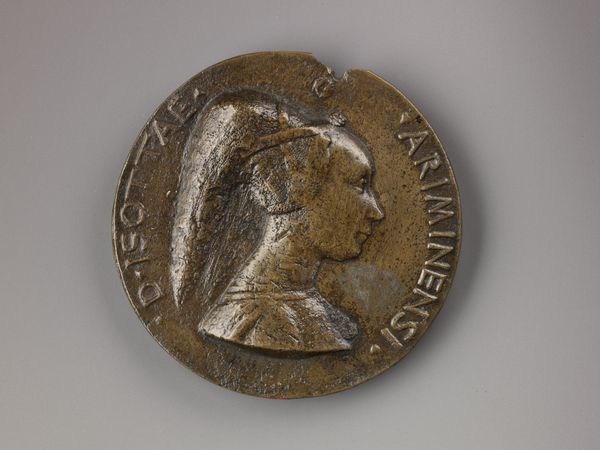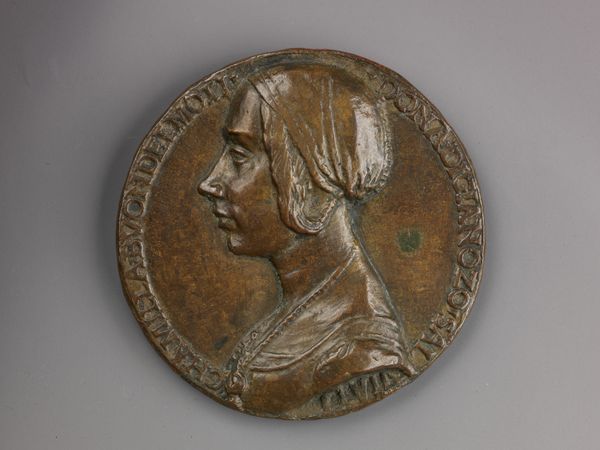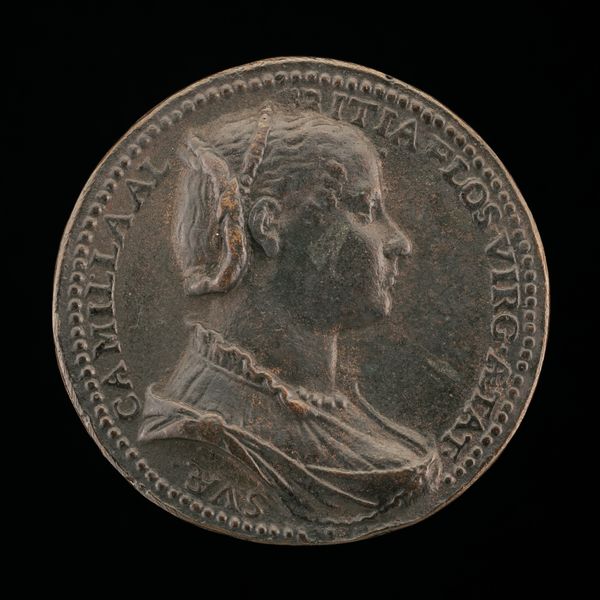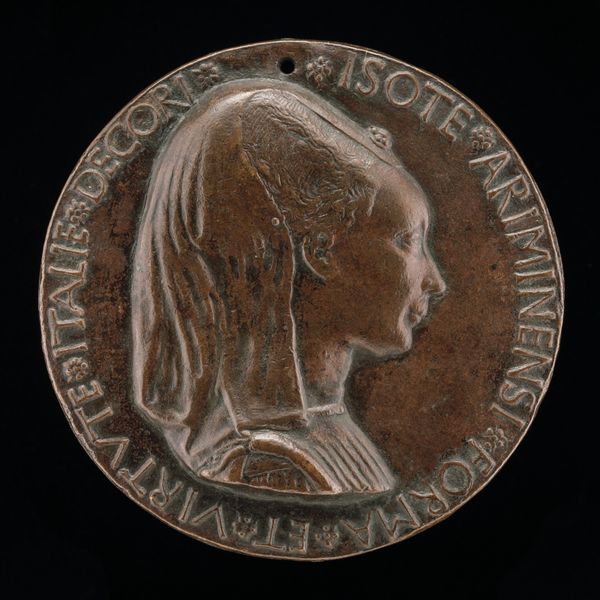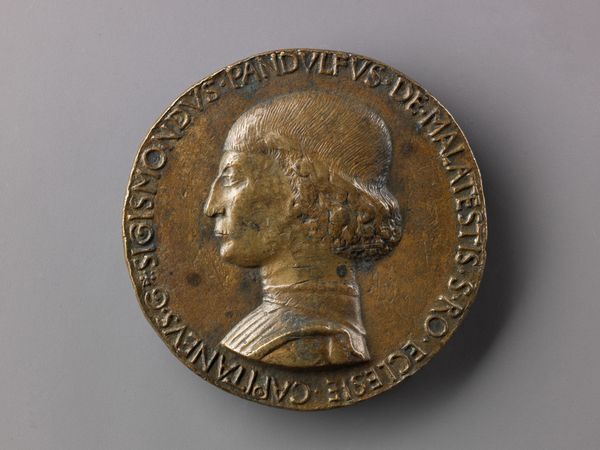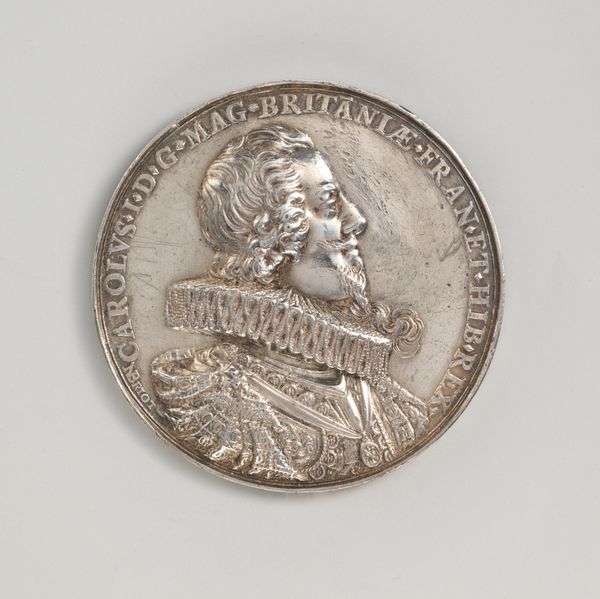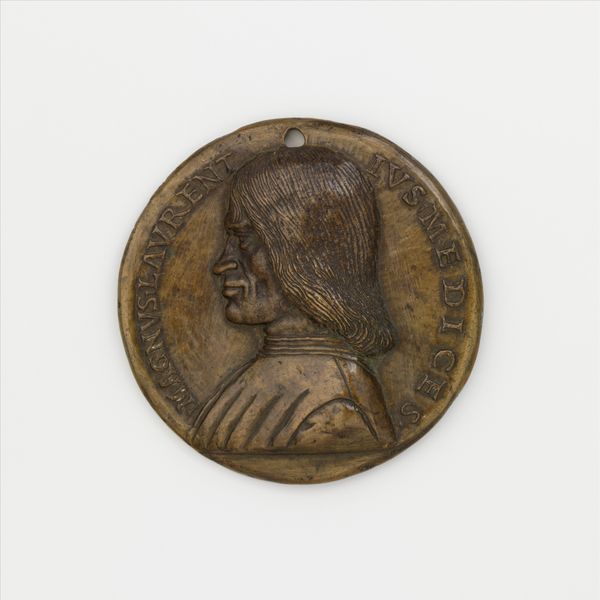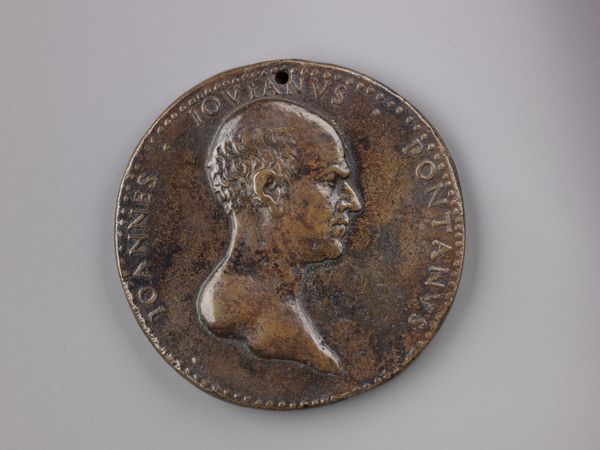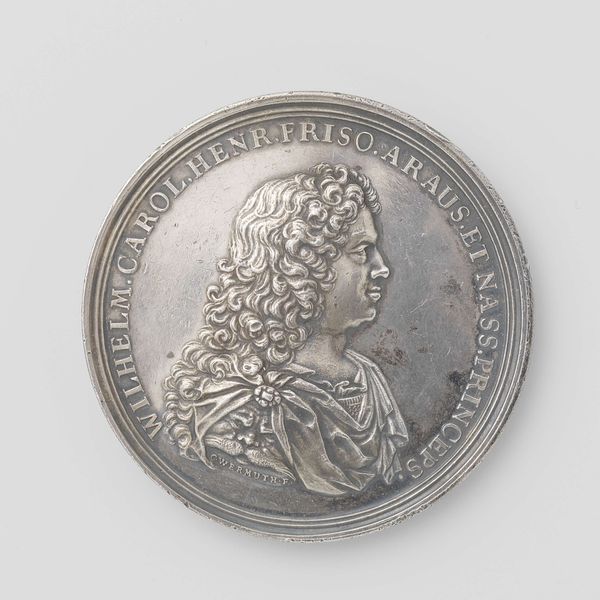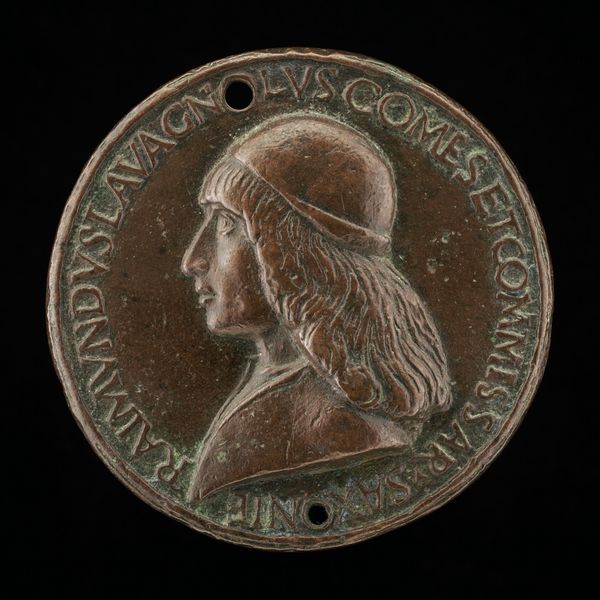
Portrait medal of Isotta degli Atti (obverse); An Elephant (reverse) 1446 - 1500
0:00
0:00
metal, bronze, sculpture
#
portrait
#
medal
#
metal
#
sculpture
#
bronze
#
11_renaissance
#
sculpture
#
italian-renaissance
#
profile
Dimensions: Diam. 8.5 cm, wt. 275.79 g.
Copyright: Public Domain
Curator: This portrait medal, dating from between 1446 and 1500, was created by Matteo de' Pasti. The obverse shows Isotta degli Atti in profile, while the reverse features an elephant. It's cast in bronze. Editor: There's a remarkable solemnity about her profile. Something almost austere, and the warm, dark bronze only amplifies that. The detail, particularly around the face, is very striking. Curator: It's interesting you say that, because medals like this were often commissioned to immortalize and, perhaps, idealize individuals. Isotta degli Atti was a very powerful woman of the time, and her portrayal certainly projects dignity. The elephant on the reverse has layers of meaning as well; representing virtues such as temperance and wisdom. Editor: And likely also a show of wealth and power. Bronze was a relatively accessible material, but creating something of this scale would still require significant resources. Who was the audience for these medals? Was it about public display, or private commemoration? Curator: Primarily, these medals functioned as portable emblems of identity and status. They could be gifted, worn, or displayed in the home. They were part of a larger cultural phenomenon of celebrating individual achievement and nobility, echoing classical traditions. Editor: It’s really captivating to consider this as a physical object traveling through time, carrying the imprint of Renaissance ideals and this woman's symbolic weight, her status literally cast in bronze, changing hands. The marks of time have enhanced it as a beautiful thing. Curator: Absolutely, seeing Isotta alongside the elephant symbol, is not just seeing a portrait, it's accessing a narrative, an encapsulation of values they wanted to express in her lifetime. Editor: It reminds us how art can embody memory itself through tangible objects. Curator: Exactly. Objects charged with meaning.
Comments
No comments
Be the first to comment and join the conversation on the ultimate creative platform.
